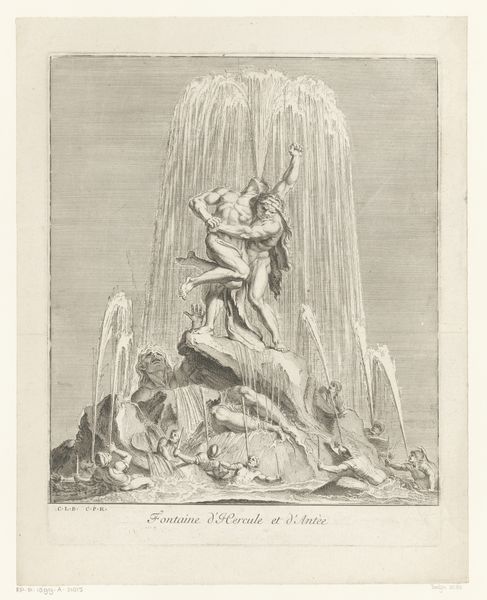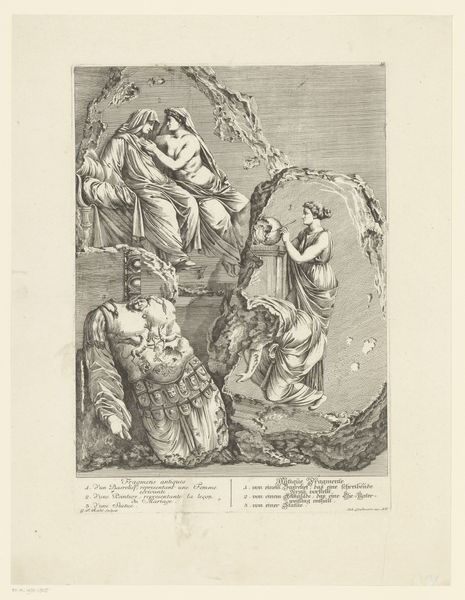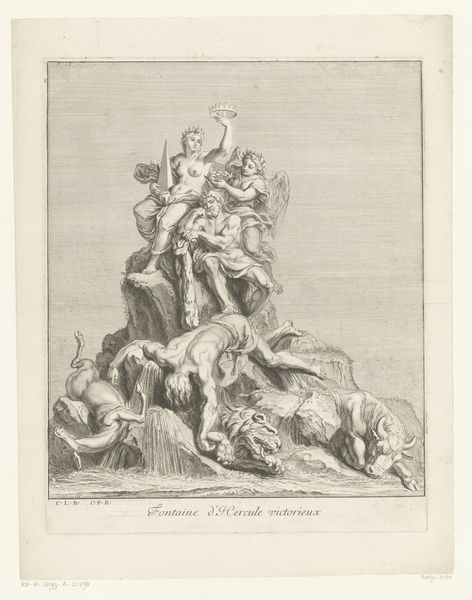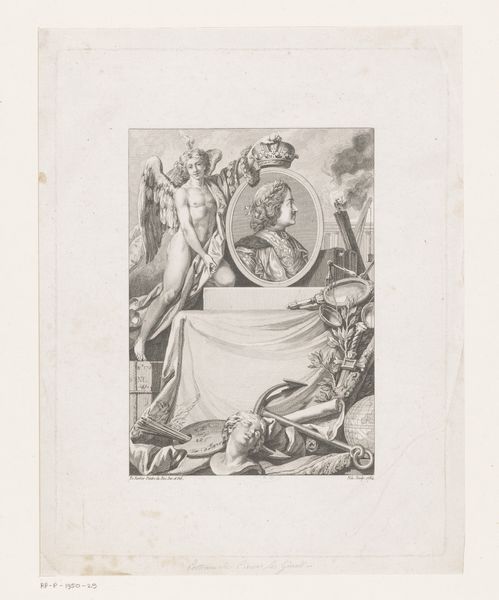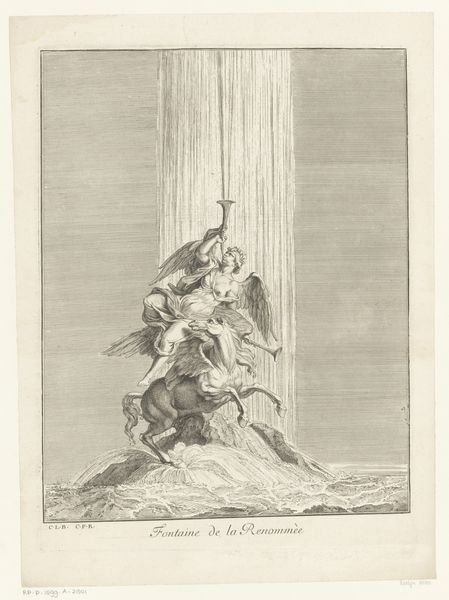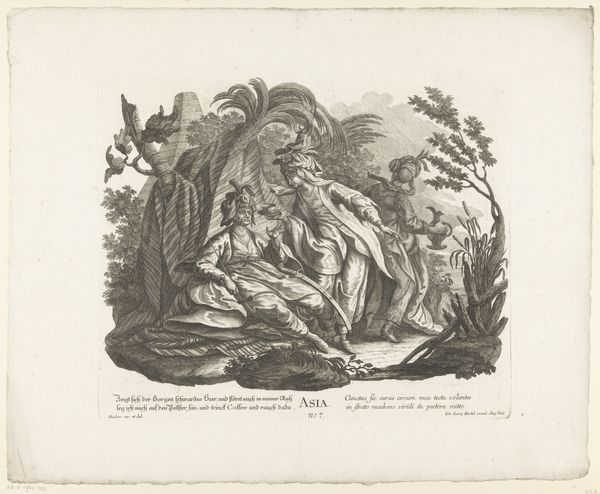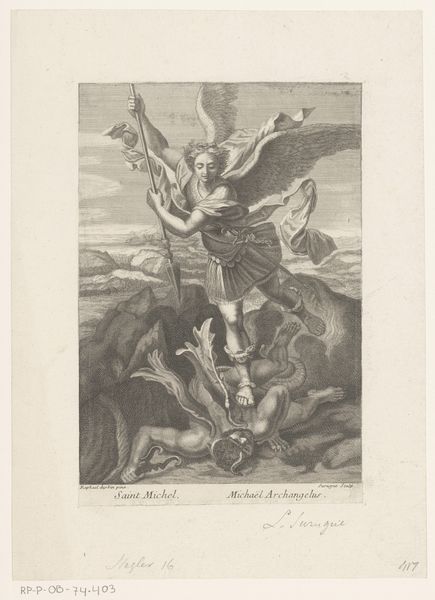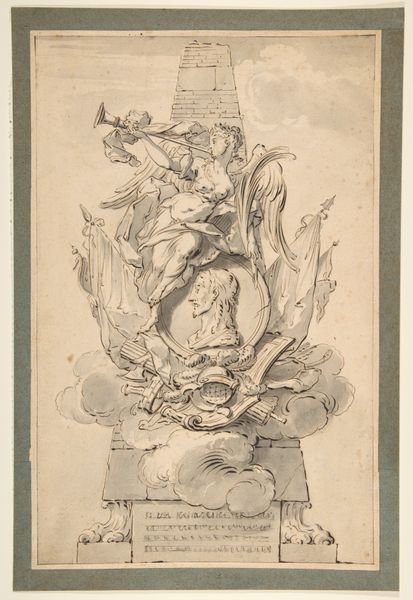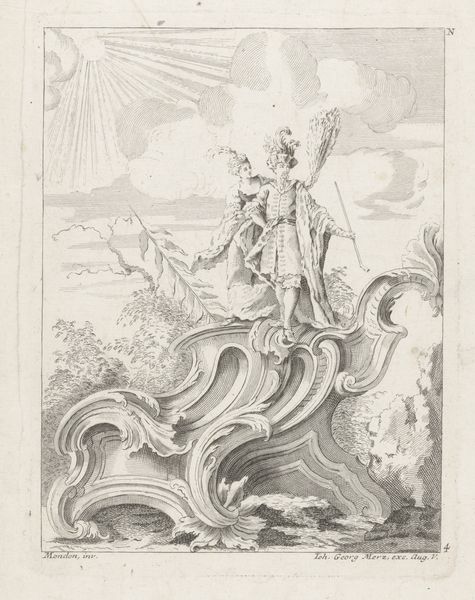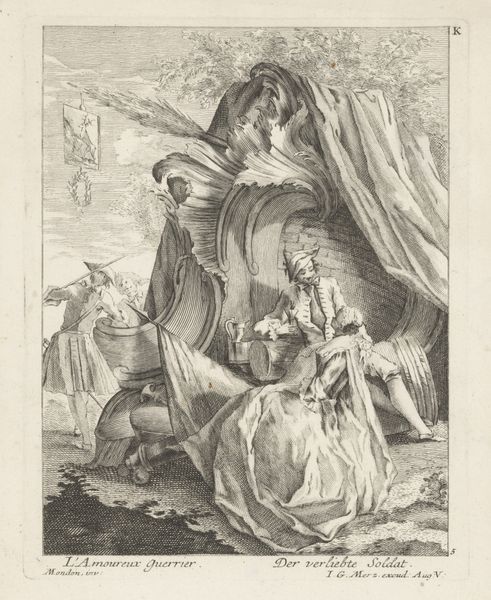
sculpture, engraving
#
allegory
#
baroque
#
old engraving style
#
landscape
#
classical-realism
#
figuration
#
form
#
sculpture
#
line
#
history-painting
#
nude
#
engraving
Dimensions: height 360 mm, width 288 mm
Copyright: Rijks Museum: Open Domain
Curator: Here we have a striking engraving titled "Fontein met Perseus en Andromeda," created between 1672 and 1686, attributed to Louis de Châtillon. Editor: My first impression is one of dramatic tension. The stark lines create a palpable sense of struggle, both in the figures and the turbulent water. It's theatrical, almost operatic. Curator: The work depicts the classical myth of Perseus rescuing Andromeda from the sea monster. Its creation aligns with a period deeply entrenched in allegorical and historical painting, often used to project power and moral lessons. Consider how the visual representation of Andromeda's vulnerability intersects with historical gendered power dynamics, and Perseus embodies patriarchal dominance. Editor: Absolutely. And the serpent itself acts as a potent symbol. Historically, serpents appear across cultures as guardians of knowledge, chaos, and primal forces. Here, the artists portrays it both as a monstrous threat and a representation of nature's untamed aspects. Do you think the artist deliberately drew on these layered meanings? Curator: It's a valid point. It allows viewers to interrogate power structures. In that moment of rescue, what potential transformations are visible? And how can they subvert classical themes from a contemporary perspective? It's important to consider whose stories were amplified and silenced, examining how the artist contributes to broader sociopolitical discourses about heroism, sacrifice, and female victimhood. Editor: I find myself captivated by the use of water, and its symbolism of both chaos and purification. Is the fountain itself not just a setting, but also symbolic? The rendering seems too literal and overwrought to be arbitrary. Curator: The water as purification offers a lens to view gender. Does Andromeda undergo an experience that strips away some of her former life, where she moves to adopt a new subject position? If the sculpture's creation responds to intersectional identities, it reveals that liberation necessitates grappling with one's own entanglement in historical violence. Editor: Contemplating all these nuances gives new meaning to de Châtillon's work. A work from another era can open conversations about our present social structures. Curator: Exactly, we need to ensure viewers develop awareness about these critical considerations and apply their understanding to reimagine a decolonized world.
Comments
No comments
Be the first to comment and join the conversation on the ultimate creative platform.
